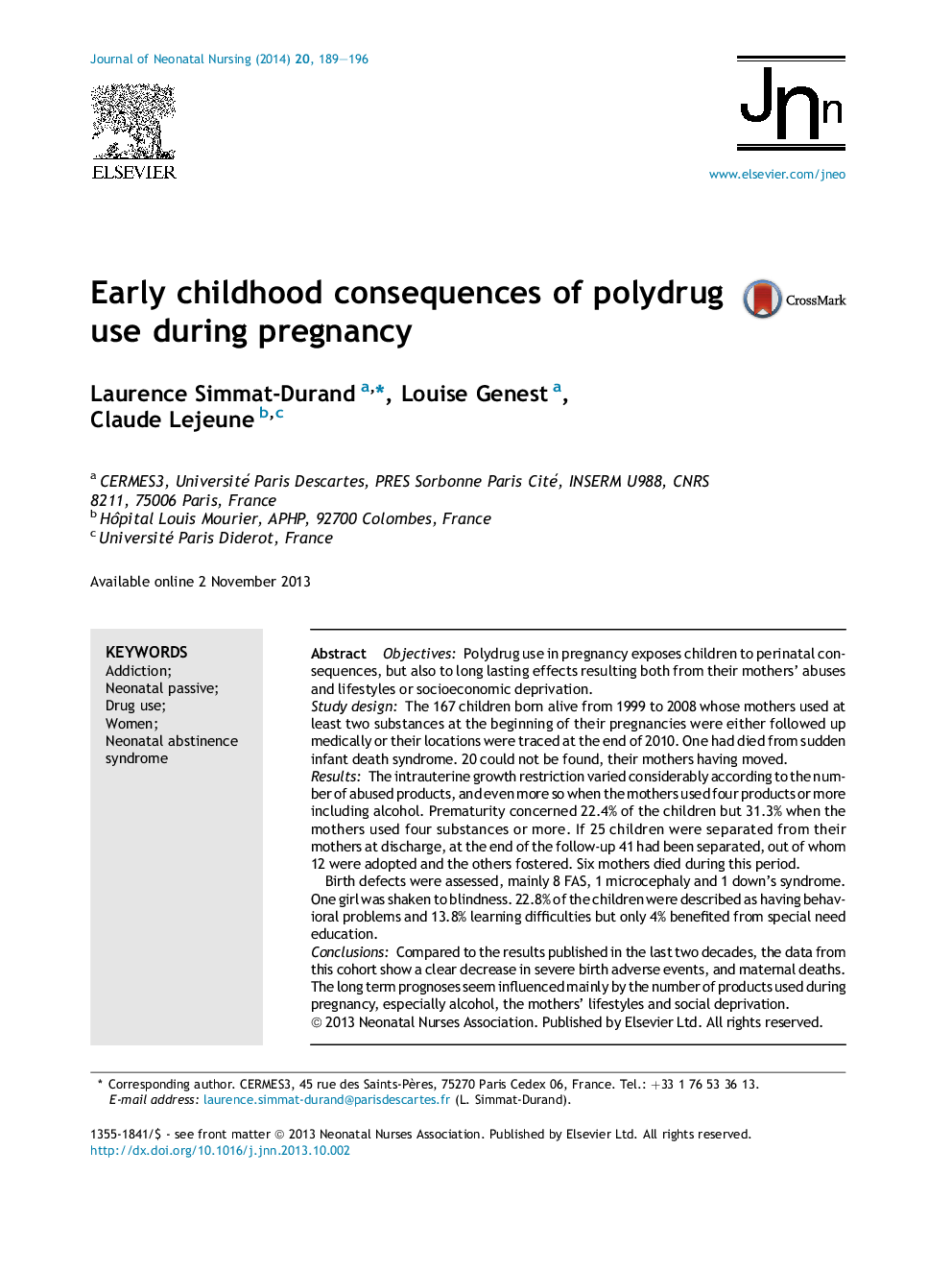| Article ID | Journal | Published Year | Pages | File Type |
|---|---|---|---|---|
| 2631480 | Journal of Neonatal Nursing | 2014 | 8 Pages |
ObjectivesPolydrug use in pregnancy exposes children to perinatal consequences, but also to long lasting effects resulting both from their mothers' abuses and lifestyles or socioeconomic deprivation.Study designThe 167 children born alive from 1999 to 2008 whose mothers used at least two substances at the beginning of their pregnancies were either followed up medically or their locations were traced at the end of 2010. One had died from sudden infant death syndrome. 20 could not be found, their mothers having moved.ResultsThe intrauterine growth restriction varied considerably according to the number of abused products, and even more so when the mothers used four products or more including alcohol. Prematurity concerned 22.4% of the children but 31.3% when the mothers used four substances or more. If 25 children were separated from their mothers at discharge, at the end of the follow-up 41 had been separated, out of whom 12 were adopted and the others fostered. Six mothers died during this period.Birth defects were assessed, mainly 8 FAS, 1 microcephaly and 1 down's syndrome. One girl was shaken to blindness. 22.8% of the children were described as having behavioral problems and 13.8% learning difficulties but only 4% benefited from special need education.ConclusionsCompared to the results published in the last two decades, the data from this cohort show a clear decrease in severe birth adverse events, and maternal deaths. The long term prognoses seem influenced mainly by the number of products used during pregnancy, especially alcohol, the mothers' lifestyles and social deprivation.
